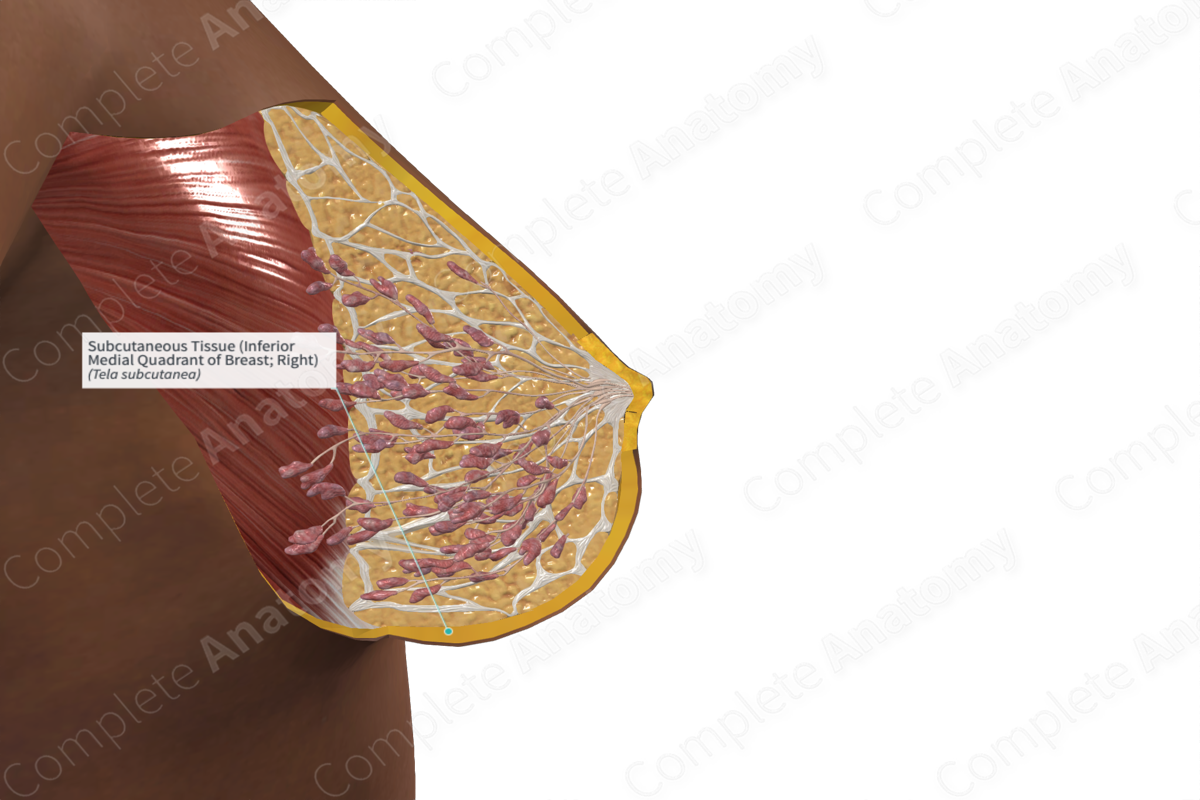
Description
The subcutaneous tissue is composed of loose connective tissue containing adipose tissue. It is found just underneath the dermis, as opposed to the visceral fat which lies within the peritoneal cavity. The amount of adipose tissue depends on various aspects, such as the location in the body, sex of the individual, and the nutrition of the individual. There is no adipose tissue in the subcutaneous portions of the eyelids, clitoris, or penis. The subcutaneous tissue contains an extensive network of blood vessels. These are important for the rapid uptake of drugs delivered by hypodermal injections, such as insulin (Ross and Pawlina, 2006).
The subcutaneous tissue acts as a thermal insulator, as a storage of energy, and as a shock absorber. It loosely attaches to underlying deep fascia, aponeurosis and periosteum, thus allowing skin to glide over these underlying structures.
Related parts of the anatomy
References
Ross, M. H. and Pawlina, W. (2006) Histology: A text and atlas. Lippincott Williams & Wilkins.



